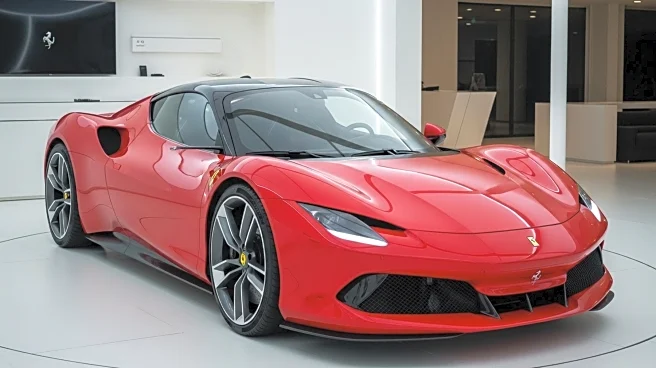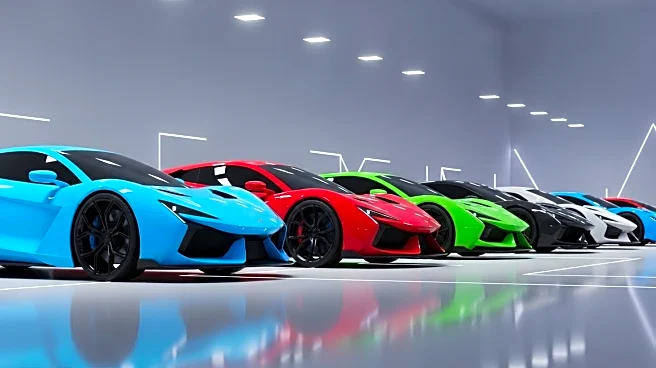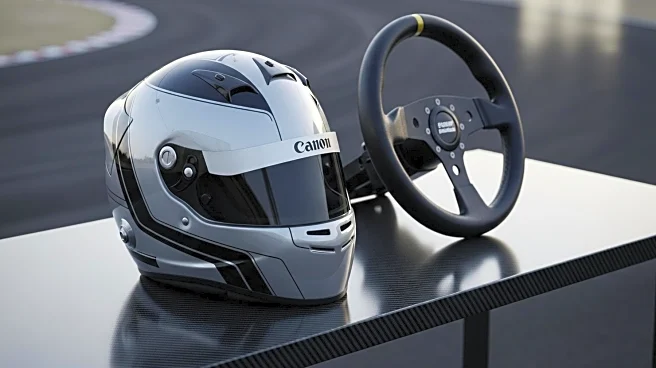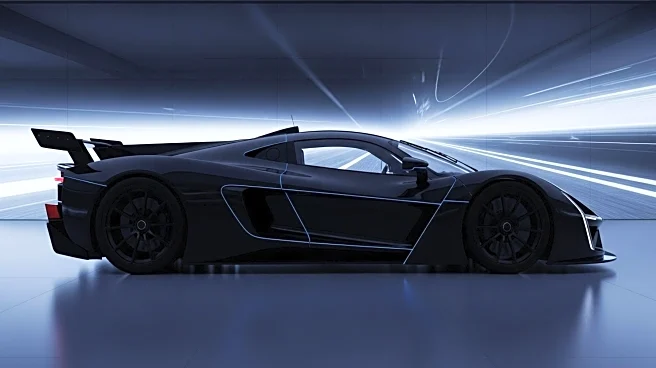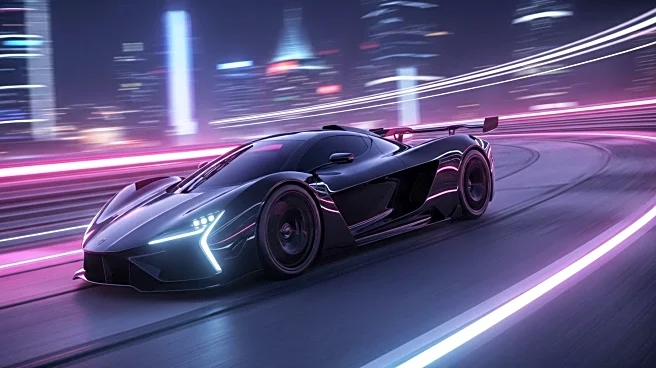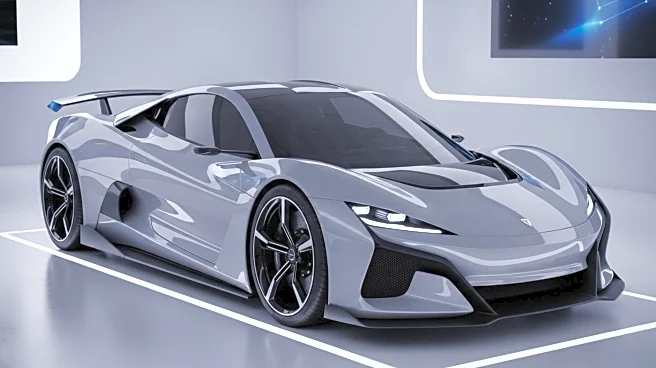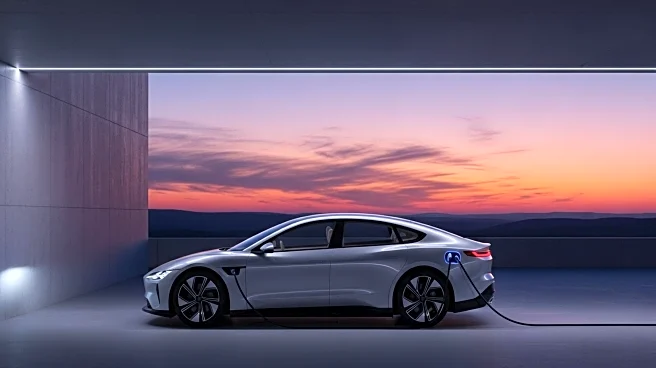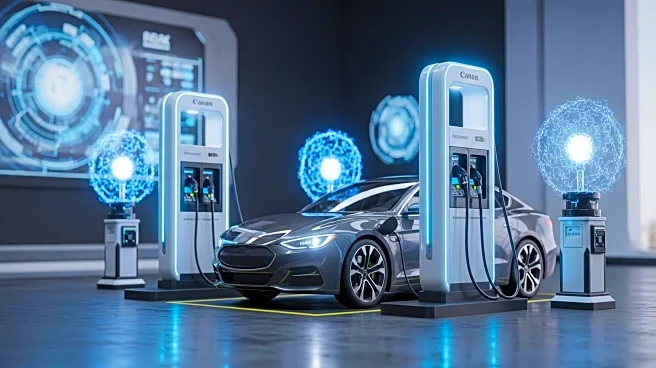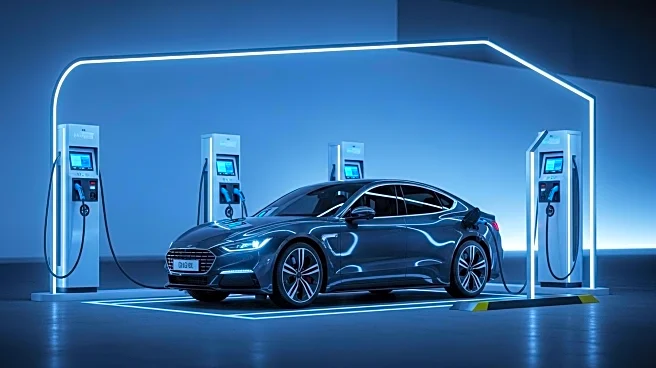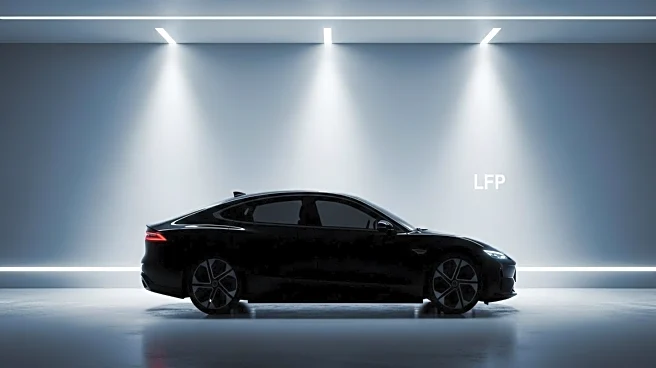What's Happening?
Ferrari is set to significantly expand its product lineup by launching 20 new models between 2026 and 2030. This ambitious plan includes the introduction of Ferrari's first electric vehicle, the 'Elettrica,' alongside updates to existing models such as the 296 and a plug-in hybrid version of the Purosangue SUV. The company aims to maintain its exclusivity by offering a diverse range of models with limited production volumes. Despite the increase in models, Ferrari's CEO Benedetto Vigna has assured that exclusivity will remain a priority, with orders already covering the entire 2026 production run.
Why It's Important?
Ferrari's expansion strategy reflects a broader trend in the automotive industry towards diversification and electrification. By increasing its model offerings, Ferrari aims to attract a wider range of buyers while preserving its brand prestige. This move is significant as it indicates Ferrari's adaptation to changing consumer preferences and environmental regulations. The introduction of electric and hybrid models aligns with global shifts towards sustainable transportation, although Ferrari anticipates that only 20% of its lineup will be electric by 2030, with the remainder being hybrids and combustion-engine models.
What's Next?
Ferrari's commitment to launching new models suggests ongoing innovation and adaptation to market demands. The company plans to continue leveraging its iconic V-12 engine in limited-run specials, maintaining its appeal to collectors and enthusiasts. Additionally, Ferrari is considering reintroducing manual transmissions in select models, responding to customer demand for traditional driving experiences. As Ferrari progresses with its diversification strategy, it will likely face challenges related to balancing exclusivity with increased production and navigating the evolving landscape of electric vehicle adoption.
Beyond the Headlines
Ferrari's strategy highlights the tension between maintaining brand exclusivity and expanding product offerings. The company's approach to electrification, with a reduced target for electric vehicles, underscores the complexities of transitioning to sustainable models while preserving traditional automotive experiences. The potential reintroduction of manual transmissions reflects a cultural shift towards valuing classic driving experiences amidst technological advancements. Ferrari's ability to navigate these dynamics will be crucial in sustaining its market position and brand identity.
